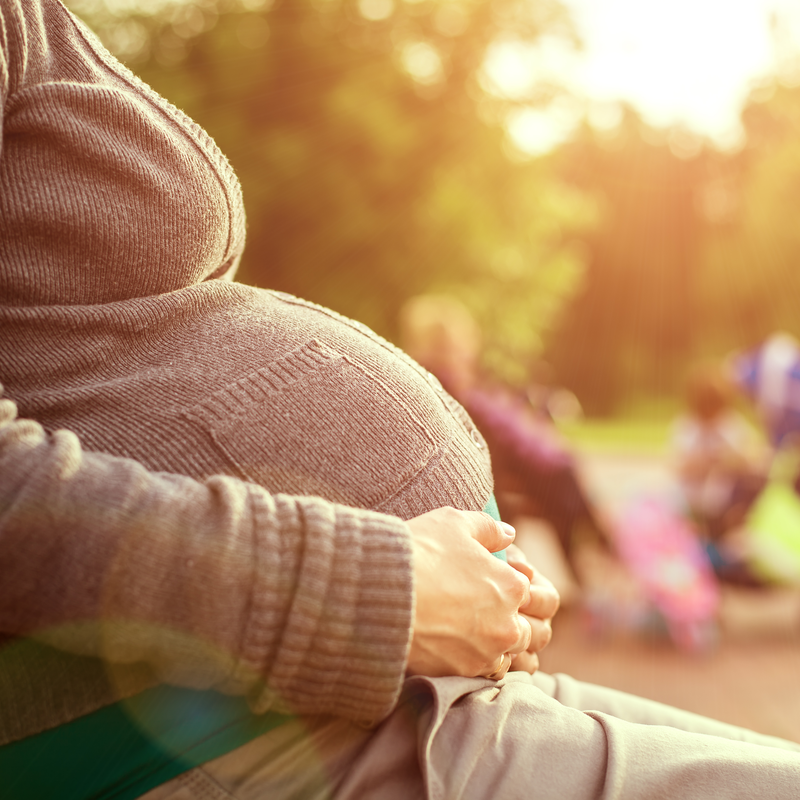
What is a trophoblastic tumour?
The trophoblast tumour is a tumour that does not develop in women from their own tissue, but from the cell parts of a pregnancy. A trophoblast tumour can develop after an abortion or a pregnancy. In the benign form, the disease is usually limited to the uterus. The trophoblast tumour is rather rare, occurring in about 0.5 per 1,000 pregnancies, but the incidence varies geographically. If a trophoblast tumour is present, HCG, the pregnancy hormone , is always elevated. Control examinations must be carried out until the hormone is no longer detectable.
What are the symptoms of a trophoblastic tumour?
The first signs of a trophoblastic tumour are very similar to an early pregnancy. The uterus grows but becomes much larger than in the first 16 weeks of pregnancy. Profuse vomiting, vaginal bleeding, absence of fetal heart sounds and absence of feather movements suggest a trophoblastic tumour if the pregnancy test is positive without the presence of pregnancy. A further clue to the diagnosis is the grape-like shedding of tissue.
What complications in early pregnancy can arise from a trophoblastic tumour?
The following complications can arise due to a trophoblastic tumour in early pregnancy:
- Sepsis,
- Uterine infection,
- Pre-eclampsia,
Haemorrhagic shock.
Also hyperthyroidism develops more frequently in pregnancy than in women without trophoblastic pregnancy disease. Usually symptoms include warm skin, sweating, heat intolerance, tachycardia and mild tremors. Pregnancy-related trophoblastic tumours do not affect fertility and do not promote perinatal or prenatal complications such as spontaneous abortions or congenital malformations in further pregnancies.
How is a trophoblastic tumour diagnosed?
A sure sign of a trophoblastic tumour is the elevated HCG level in the blood and in the urine. If a pregnancy test is used to detect a pregnancy, a trophoblastic tumour is suspected if the following features are present:
- The uterus is much larger than expected for the week of pregnancy,
- Symptoms or signs of pre-eclampsia,
- Tissue comes off in a grape-like fashion,
- A very suspicious sign is the mass with many cysts,
- unexplained complications during pregnancy.
If
a pregnancy-related trophoblastic tumour is suspected, the
diagnostics will make the diagnosis on the basis of the determination of HCG in the serum and an ultrasound
of the pelvis. If the HCG value is higher than 100,000
mlU/ml, a thyroid function test is carried out to rule out
hyperthyroidism.
Before a trophoblastic tumour can be treated, it must be classified into its stage . A trophoblastic tumour is considered low risk if any of the following criteria apply:
- FIGO stage I: a permanently elevated HCG- level and/or a tumour that is confined to the uterus.
- FIGO stage II or III: WHO risk score is 6 or less than 6.
A trophoblastic tumour is considered high-risk disease if any of the following criteria apply:
- FIGO stage II and III: WHO risk score is more than 7.
- FIGO stage IV.
How is the trophoblast tumour treated?
A trophoblastic tumour is removed by suction curettage. If the patient no longer wishes to have a child, it is possible to perform a hysterectomy, i.e. removal of the uterus. After removal of the pregnant woman's tumour, it must be clinically classified in order to decide whether further therapy is necessary. An X-ray examination of the thorax is also carried out and the HCG level in the serum is checked. If the HCG level does not normalise within 10 weeks, the throphoblastic tumour is classified as persistent. The presence of this persistent disease requires further examination, such as CT of the skull, pelvis and abdomen, in order to classify the trophoblastic tumour as non-metastatic or metastatic.
If it is a persistent trophoblastic tumour, in most cases chemotherapy is administered. The therapy is considered successful if a minimum of 3 HCG levels are within the normal range at weekly intervals. However, pregnancy should be prevented for 6 months after treatment, because an increased HCG level makes it much more difficult to determine whether or not the therapy was successful . As a rule, oral contraceptives are given for half a year. Of course, any other effective contraceptive method can be used as an alternative.
If a trophoblast tumour has not yet metastasised, therapy with cytostatic drugs is certainly possible. For patients over 40 years of age or for women who wish to be sterilised, a hysterectomy is considered and may also be necessary in complicated cases and in the case of uncontrolled bleeding or infections. Trophoblast tumours that have metastasised but are low risk are treated with chemotherapy with one or more agents. For high-risk metastases, chemotherapy with several drugs is necessary, as the patient very quickly develops resistance to just one drug .
What is the prognosis for a throphoblastic tumour?
The prognosis for this type of tumour is very good overall. The cure rate with low risk is 90 to 95 %. For high-risk trophoblastic tumours , the cure rate is still 60 to 80 %. The risk of resistance or progression of the disease also depends on whether chemotherapy is given with only one drug or several.
How is the throphoblastic tumour followed up?
As aftercare, checking the HCG is essential. A recurrence can be detected and treated early on the basis of a rise in . The gynaecological check-ups at the gynaecologist are also important and advisable.
